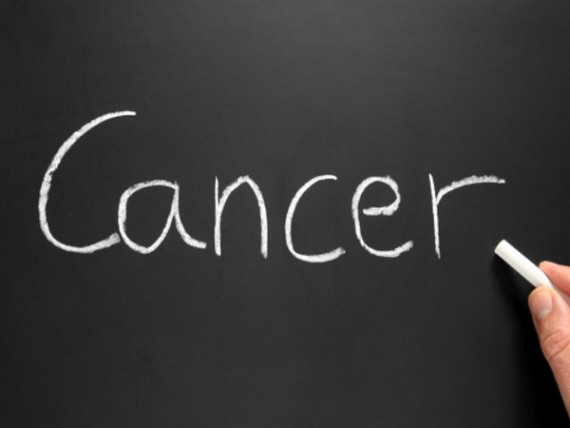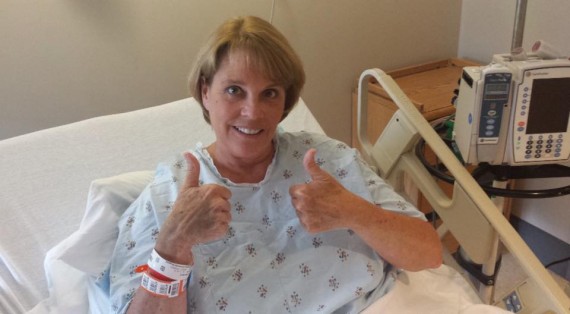
The call from my wife’s doctor came after a routine check-up. A tiny speck of blood in her urine. The doctor sent Patti to a urologist. He suggested a CT scan of her kidneys.
In the past decade, Patti’s two younger sisters have died from cancer. Her mother is currently in stage four. Would you be afraid?
The scan revealed two lesions, one hardly noticeable. Both less than 1 cm. Some of us never learned metrics. It is 0.39 inch.
A biopsy was ordered. Worries before the needle went in. What would it show?
Whew! Relief. High fives! Smiles. It’s benign. No cancer.
Just the same, Patti said, “I want it out.”
Our insurance company asked why? Said it wasn’t necessary. The biopsy showed no cancer. Leave it alone. Live with it.
“No,” Patti said. “That’s not acceptable.” She sought help from the urologist. She made phone calls, wrote letters, challenged the insurance company, dug in her heels.
“Is all this really necessary?” I asked one night. “If there isn’t any cancer, why go through all this?”
“I want it out,” she said, surprised that I would question her reasoning. Her good friend, Karen Amato, a former nurse and medical case manager, agreed. Used to dealing with insurance companies, Karen advised Patti and encouraged her to keep fighting.
After eight months, our insurance company relented. It authorized an ablation. I learned a new word: cryoablation. It’s the freezing of targeted tissue, damaging the bad cells, causing them to die and then heal over. A date was set. The doctor needed to be certain where the lesions were located so more scans were ordered.
Maybe it was another CAT scan or an MRI. I don’t recall. I only remember the look on Patti’s face when the doctor stopped the procedure because the lesions had grown. Possibly doubling in size. She would need surgery to remove them. The doctor was careful with his wording but it was clear that he suspected cancer. The dreaded C word.
“But the biopsy showed it wasn’t cancer!” I reminded everyone.
Our good friend, Sue Infeld, a former emergency room nurse now a parish nurse for a local catholic church, found us one of the nation’s top surgeons, Dr. Thomas W. Jarrett, chairman of Urology at The George Washington University Hospital, and jumped over hurdles to get us an appointment. His calm manner was soothing. As kindly as he could, he explained that a biopsy is not error proof. The sample simply proved that the extracted cells were not cancerous. Had the sample come from another section of the lesion, the biopsy might have shown cancer.
Dr. Jarrett explained the best and worst case scenarios. Best: the tumor (it was what everyone was now calling the lesion) wasn’t cancerous. He would remove it robotically while performing a partial nephrectomy – another fifty-cent medical word that meant he’d only remove the portion of the kidney that contained the tumor leaving the rest of her kidney intact. Worst: The tumor was cancerous, he would not be able to remove it robotically and he would need to perform a radical nephrectomy, removing Patti’s kidney. The worst – worst scenario: it was cancerous and had spread outside her kidney to her lymph system and other organs.
Another CT scan was needed to pinpoint the tumor now growing inside her. Next came a sonogram to further help Dr. Jarrett determine the best way to remove it. The tumor was hiding itself well.
Everything was ready. Now we waited. Sleepless nights. We told each other that it would be okay. We told each other that everything would go well. But I knew that it was difficult to convince someone who had lost her first husband in his thirties to cancer and then two sisters.
Surgery day. A kiss goodbye as I watched her being wheeled away by strangers. A forced smile. A thumbs up. A wave.
The surgery began at 7:45 a.m. Patti had been given a four number code – 2740 –that appeared on a screen that would tell me when she had been moved from the operating room into the recovery room. It’s HIPAA at work. No one had a name on the screen in the waiting room. Only numbers. There were fifteen numbers on the board that morning. I glanced around. More than twice that number of people waiting. Husbands, wives, adult children.
Sue came to the hospital to wait with me. Nervous chatter. Hugs. Emails from Patti’s close friend, Marie Heffelfinger. Texts from our children.
An hour, then two, then three. What did that mean? No movement on the screen. I began pacing, pushing out ugly thoughts. I watched other numbers moving across the screen. But not 2740. After four hours, her number glided to the recovery room column and Dr. Jarrett appeared. The operation had been tricky because of where the tumor was growing, but he managed to remove it robotically through a partial nephrectomy. Best of all, it was encapsulated. There were no signs that it had spread outside the kidney.
“It appears to be cancer,” he said.
But it was out of her body now thanks to his considerable skills. I remember glancing around the waiting room. I wanted to holler! To cheer! And then I wondered: How many will get the wonderful news I did?
A later report confirmed it was cancer.
Moments such as this remind us of how fragile life is. Moments such as this remind us of what is important in our lives. Moments such as this remind me of how fortunate Patti and I are to have such precious friends and how grateful I am for such fabulous doctors.
And finally, how fortunate I am to have such a wise and stubborn spouse. If Patti had done nothing — which is what our insurance company had wanted — at the rate that her tumor was growing – well, the five year survival rate for Stage 1 kidney cancer (tumors under 7 cm) is 81%. The survival rate after it spreads and becomes Stage Four is 8%.
When it comes to health care, Patti reminded me that sometimes you have to fight as if your life depends on it, because oftentimes it does.

Cancer free



